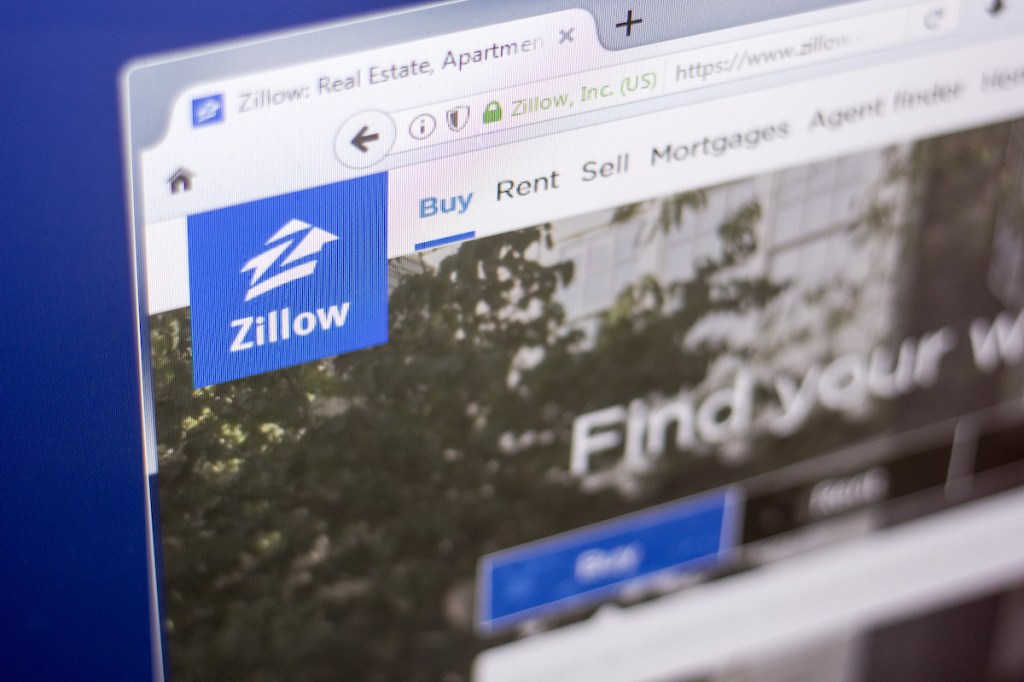So-called iBuyers purchased a total of 70,402 homes in 2021, more than doubling the number purchased in 2019, according to a report from Zillow released on Tuesday. The shopping spree, in a historically wild housing market, led to Zillow’s implosion and a lot of red ink on Opendoor’s books.
Beyond just a record number of purchases by the iBuying companies, the number of completed home sales (44,933) also exceed the previous high from 2019 (28,265).
While the fourth quarter did see a slowdown in the number of homes sold to iBuyers – largely due to low inventory and Zillow bowing out of the game in November – the 21,523 homes sold in the 28 largest iBuyer markets to Opendoor, Zillow Offers and Offerpad, still came in as the second strongest number on record.
The iBuying industry’s share of the housing market as a whole also dipped during the fourth quarter, dropping to 1.7% from 1.9% during the previous quarter.
Homeowners in Atlanta sold the most homes using an iBuyer, followed by Phoenix, Dallas-Fort Worth, Charlotte and Houston, according to the Zillow report.
Although the number of homes sold nationally using an iBuyer dropped roughly 20% from Q3 to Q4, iBuyer sales increased in four metros: Columbia, South Carolina (+91.2%); Miami (+21.9%); Lakeland, Florida (+5%); and Raleigh, North Carolina (+4.2%).
Raleigh (11%) was the only metro where more than 10% of homes sold during the fourth quarter were sold using an iBuyer, however, Tucson (9.5%), Atlanta (8.9%), Jacksonville (8.9%) and Phoenix (8.8%), were all close behind.
The median price of homes sold using an iBuyer dropped to $372,100 in the fourth quarter, possibly reflecting the median markup for homes bought and sold by iBuyers dropping to 1.1% during Q4, markedly lower than the record high of 8.6% set during the first quarter of 2021.
Despite this, the median sale price remained above the overall U.S. median sales price of $335,060. However, iBuyers tend to operate in more expensive housing markets, with the median iBuyer price in 24 of the 33 metro areas analyzed coming in lower than the overall median sales price in that metro, potentially causing the overall median sales price for a homeowner using an iBuying service to skew higher than the overall national average.
During the fourth quarter, iBuyers on average held the homes they sold for 98 days, which includes the time it took to get the home ready to sell, the time the home spent on the market and the time it took to close on the sale. This time period is three weeks longer than the 79 days recorded in the previous quarter, and more than a month longer than the record low set during the second quarter of 2021. Experts attribute this increase to the typical seasonal slowdown seen in during the winter, as well as the ongoing labor and material shortages causing construction and repair backlogs.
For all the transacting iBuyer’s did in 2021, only one was profitable: Offerpad, which posted $6.5 million in net income. Zillow notably lost so much money through its headfirst dive into iBuying – $881 million – that it shelved the program in November. Opendoor, however, managed to exceed Zillow’s overall net loss in 2021, recording a $662 million loss of its own. Not analyzed in the report was Redfin, which CEO Glenn Kelman stressed was not just an iBuyer during the brokerage’s third quarter earnings call with investors, reported a $110 million loss in 2021 due to ramping up its iBuying program.
As housing inventory nationwide tightens further, home prices inch higher and higher, and mortgage rates move into the mid-4s, Offerpad and Opendoor could struggle in 2022.





